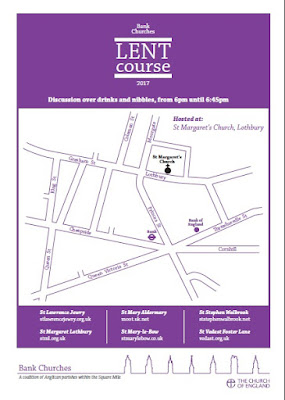Bible reading
Then Moses said to the Israelites: See, the Lord has called by name Bezalel son of Uri son of Hur, of the tribe of Judah; he has filled him with divine spirit, with skill, intelligence, and knowledge in every kind of craft, to devise artistic designs, to work in gold, silver, and bronze, in cutting stones for setting, and in carving wood, in every kind of craft. And he has inspired him to teach, both him and Oholiab son of Ahisamach, of the tribe of Dan. He has filled them with skill to do every kind of work done by an artisan or by a designer or by an embroiderer in blue, purple, and crimson yarns, and in fine linen, or by a weaver—by any sort of artisan or skilled designer. (Exodus 35. 30 – 35)
Meditation
The first person in the Bible to be described as having been filled by the Holy Spirit was an artist - Bezalel, who worked on the Tabernacle. As the first Spirit-filled person mentioned in the Bible, Bezalel, was chosen by God to be skilled, knowledgeable and able to teach in all kinds of craftsmanship. So, to be biblically inspired is to make or create.
Creativity, this passage suggests, is a gift of God. Ultimately, creativity is a gift of God because God is creative and we are made in his image. He is the Creator, the one who said "Let there be" and life came to be; the One whose glory is proclaimed by the heavens and the work of whose hands is proclaimed by the skies. We are made in the image of the Creator God and therefore we too are creative. We are all creations of the Creator, created in His image, to be creative!
God is the ultimate creator, who created from nothing, and we are sub-creators, able to, as
Dorothy L. Sayers put it, "rearrange the unalterable and indestructible units of matter in the universe and build them up into new forms." As
J. John has said, 'Creativity has been built into every one of us: it is part of our design. Each of us lives less of the life God intended for us when we choose not to live out the creative gifts God gave us.'
It is easy to think that this only applies to certain chosen people who have the aptitude for creativity – to think that we should all strive to be 'artists' in the sense of being musicians, novelists, poets, painters etc - but that is not the witness of the Bible, taken as a whole. God's Spirit gives each person gifts, as Paul writes in 1 Corinthians 12, but the gifts that we are given differ from person to person. This means that we are all creative but in differing ways.
Edith Schaeffer, in her useful book
Hidden Art, says that this does not mean that we should all strive to be 'artists':
"But it does mean that we should consciously do something about it. There should be a practical result of the realization that we have been created in the image of the Creator of beauty ... the fact that you are a Christian should show in some practical area of a growing creativity and sensitivity to beauty, rather than in a gradual drying up of creativity."
She continues by writing that, "it may be helpful to consider some of the possibilities all of us have for living artistically, but which are often ignored." This is what she calls 'Hidden Art'; the development of our talents (whatever they are) and their use in a way which will enrich other people's lives. By doing so, we express the fact of being creative creatures made in the image of our Creator God.
God’s image in us means that all people are creative in some way. A creator God has created creative people! Therefore, whether we’re writing, cooking, painting, composing, acting or taking photographs we can all use our creativity to learn from God and express our worship to him. As the saying goes, ‘The artist is not a special kind of person, every person is a special kind of artist.’
Intercessions
Creator God, we remember and give thanks for those who pour their souls into music loud and soft, those who put pigment to surface, carve wood and stone and marble, who work base metals into beauty, those building upwards from the earth toward heaven, those who put thought to paper by computer and by pen; the poets who delve, the playwrights who analyze and proclaim, the dreamers-up of narrative, all those who work with the light and shadows of film, actors moved by Spirit and dancers moving through space. Lord, remember your artists. Have mercy upon them and remember with compassion all those that reflect the good, the ill, the strengths and the weaknesses of the human spirit.
Creative God, fill us with your Spirit
that we might use your creativity in our lives and work.
Teach us, Lord, to use wisely the time which You have given us and to work well without wasting a second. Teach us to profit from our past mistakes without falling into a gnawing doubt. Teach us to anticipate our projects without worry and to imagine the work without despair if it should turn out differently. Teach us to unite haste and slowness, serenity and ardour, zeal and peace. Help us at the beginning of the work when we are weakest. Help us in the middle of the work when our attention must be sustained. In all the work of our hands, bestow Your Grace so that it can speak to others and our mistakes can speak to us alone. Keep us in the hope of perfection, without which we would lose heart, yet keep us from achieving perfection, for surely we would be lost in arrogance. Let me never forget that all knowledge is in vain unless there is work. And all work is empty unless there is love. And all love is hollow unless it binds us both to others and to You.
Creative God, fill us with your Spirit
that we might use your creativity in our lives and work.
God, we are truly bearers of the light from above, within and around us. Help us to be bearers of that light to others who seek a vision of the goodness and beauty of Your Creation. We ask that you help us and our creative work to be witnesses to your love, your kindness, and your care for us. Continue to inspire us with the gift of your imagination.
Creative God, fill us with your Spirit
that we might use your creativity in our lives and work.
The Blessing
Bless all who create in your image, O God of creation. Pour your Spirit upon them that their hearts may sing and their works be fulfilling, and the blessing of God almighty, the Father, the Son, and the Holy Spirit, be among you and remain with you always. Amen.
--------------------------------------------------------------------------------------------
Arcade Fire -
Ready To Start.



































